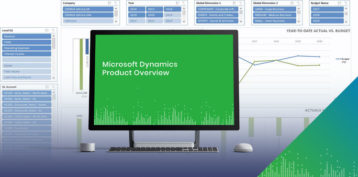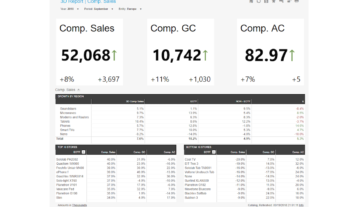The Ultimate Guide to Automated Year-End Disclosure Management

Market turbulence can dramatically influence the complexity of year-end disclosure processes for the finance team. Economic fluctuations, regulatory shifts, and market volatility will impact financial results and necessitate thorough explanations in disclosures to provide context for stakeholders. Uncertainties in supply chains and operational disruptions, caused by global events, can affect the assessment of risks and uncertainties. Market sentiment and investor reactions will lead to shifts in asset valuations, influencing fair value disclosures. Furthermore, changes in credit availability and financing conditions might need to be explained to shed light on liquidity and funding risks.
Even when the market is stable, finance teams face long hours, strict deadlines, and a laser focus on details during the year-end period. In many companies, this is largely due to the legacy manual processes unpinning year-end disclosures. This leads to a number of limitations for the finance team that increase their workload and stress.
- Ineffective copy and paste: Without a single, integrated year-end reporting solution, these copy-and-paste processes are the norm. Manual financial reporting means you have to go back and edit every downstream document.
- Siloed Narratives: Users have multiple systems of record for narrative content, so the data must be manually distributed and is not synchronized across platforms and documents associated with the year-end reporting cycle.
- Complex Collaboration: Multiple system of record will scatter comments across the platforms of geographically distributed teams. Everything is managed across multiple locations, resulting in multiple copies of the same information.
- The Pain of XBRL Tagging: Many companies are still outsourcing the process of adding XBRL tags to year-end reports because they cannot do this in-house. Employing manual financial reporting processes with embedded XBRL capabilities wastes money and involves extra steps, adding days in the year-end reporting process.
8 Essential Resources for Enhancing Your Year-End Close
These resources will equip you with the knowledge to effectively navigate the year-end disclosure landscape, covering issues like automating reports, tightening controls, data consistency, system collaboration, having the right narrative, and much more.
1. Compliance Confidence With a Single Source of Truth: This white paper explores how disclosure management software has become essential in centralizing and managing necessary year-end close documents through a single source of truth. Learn how to avoid the pitfalls of versioning and data entry, so you can speed up your year-end close cycle and reduce the risk of inaccurate disclosure.
2. Multi-User Collaboration Empowers LifePoint Health: In this case study, LifePoint Health uses a disclosure management solution to increase its year-end close reporting efficiency while ensuring its disclosures meet regulatory requirements. After implementing a disclosure management solution for year-end reports, the finance team have a much more efficient process and can utilize Excel to update tables in their documents immediately.
3. Better Business Reporting With Certent Disclosure Management: Read this blog on the benefits of integrating disclosure management into your already functioning in-house system. Learn how to meet the demands of the increasing nuanced complexities of electronic year-end reporting with a tool that compliments your current system, is cost effective, implements easily, and gives you what you need.
4. The Growing Importance of Automation in Disclosure Management: A blog on how efficient year-end disclosure management can significantly reduce disclosure risk. Understand the advantages that come with the ability to combine words and numbers for publication, and exercise much greater control over high frequency, recurring, multi-author reports. Bring speed, accuracy, and consistency to your laborious, error-prone, uncontrolled year-end process.
5. Automate Reports & Effectively Communicate Business Performance: In this brochure, discover how to overcome traditional year-end management reporting challenges such as versioning overlap and risky manual processes. Learn how you can produce automated and scalable recurring reports that include narrative around the numbers to effectively communicate business performance to important stakeholders.
6. LV= Tightens Controls Across Internal and External Reporting: With a new year-end disclosure management solution in place, LV= experienced a significant reduction in time spent producing recurring internal and external reports. The finance team increased controls around the process, gained a vote of confidence with their auditors, and reduced overall risk. In this case study, find out how the solution gives them a single source of truth for their year-end disclosures.
7. Resilient Narrative Financial Reporting and Remote Collaboration: For many CFOs, the remote working shift and the ensuing need for secure collaboration highlighted a key gap in digital transformation strategies. In this video, see how finance teams have navigated the challenge of connecting data sources and enabling remote collaboration during the year-end close process. Learn how they ensure data consistency across finance, sustainability, and investor relations for end-of-year reporting cycles.
8. 4 Ways to Avoid Year-End Overload With Automated Reporting: Use this blog to discover four ways to more efficiently manage financial year-end disclosures. By automating and integrating your reporting disclosure processes, you can eliminate vast amounts of manual effort and relieve your team of the overload that is often associated with year-end processes.
Visit our website to learn more and see if Certent Disclosure Management is right for you.







